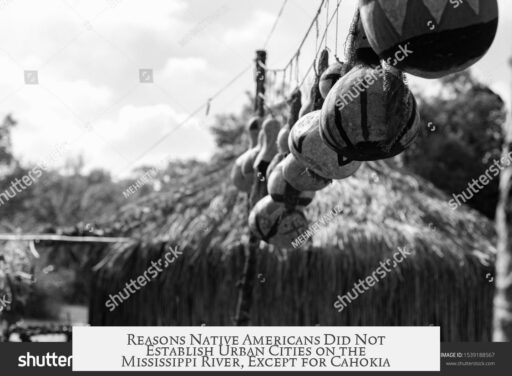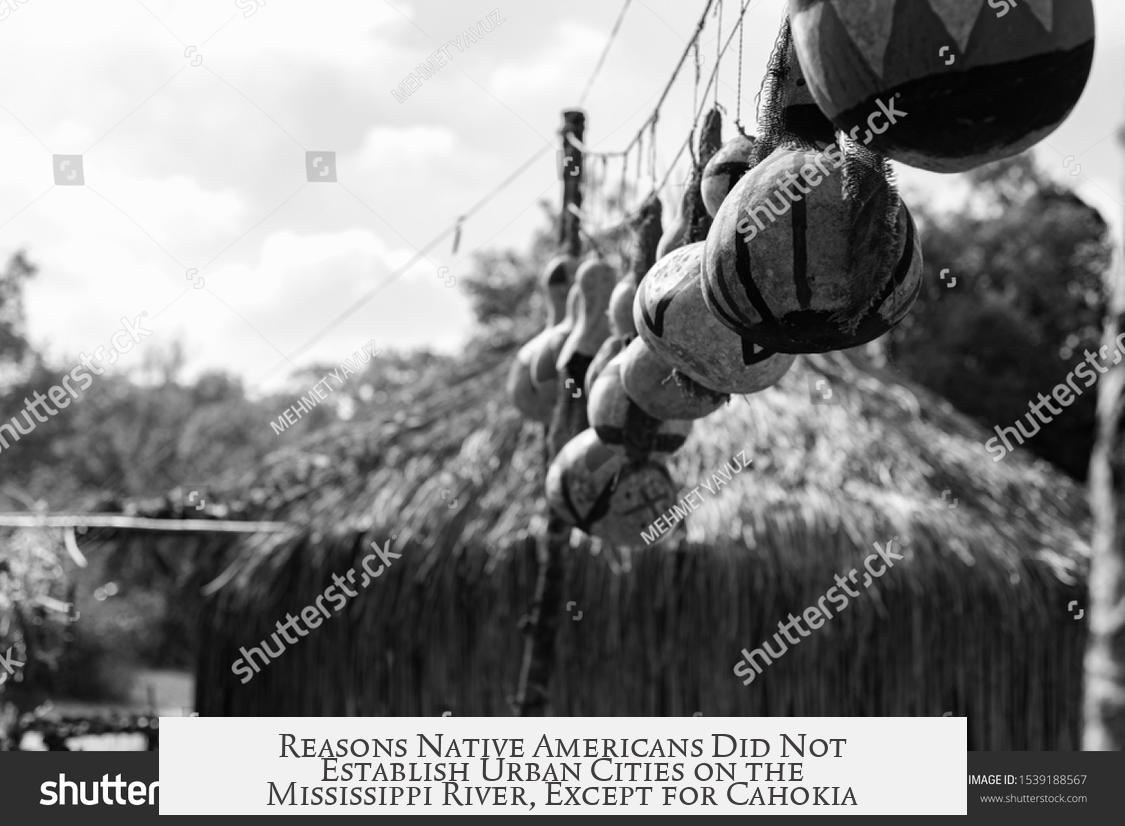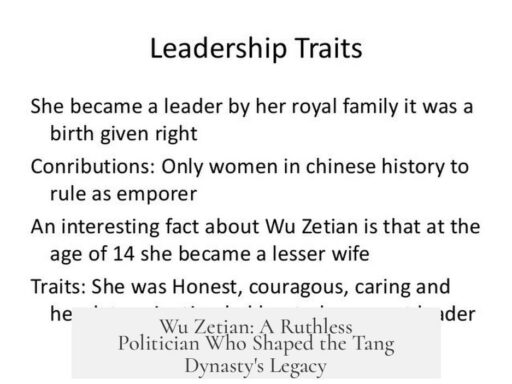With the exception of Cahokia, Native Americans did not settle large urban cities on the Mississippi River mainly because of cultural, environmental, and archaeological factors rather than a simple lack of desire or ability. Several key reasons explain why Cahokia emerged as a unique case while other large urban centers did not develop along the Mississippi in the same way.
First, the Mississippian culture thrived from about 800 CE to 1600 CE and centered around a diverse system of settlements rather than expansive, single urban hubs. Cahokia was indeed the largest of the mound-building societies and the most complex urban center discovered, but it was not the only significant settlement. Other important mound sites such as Moundville in Alabama, Etowah in Georgia, and Angel Mounds in Indiana formed part of a hierarchical system of settlements, ranging from multi-mound towns to smaller communities. Each of these sites was located near rivers, supporting the idea that river proximity was important but did not always lead to the development of singular, sprawling cities like Cahokia.
The settlement hierarchy reveals that many smaller mound centers existed carrying out administrative and ceremonial purposes, supported by agricultural and economic collaboration with surrounding villages. This fragmented settlement pattern suggests a cultural preference or social organization different from centralized urban models seen elsewhere in pre-Columbian America, such as in the Andes or Mesoamerica.
The adoption of maize agriculture was crucial in facilitating denser populations and more complex societal structures. However, this agricultural system supported a network of multiple smaller centers rather than one dominant city. The political, social, and economic organization of Mississippian peoples did not require the formation of many urban-sized cities along the Mississippi River, besides Cahokia’s exceptional rise.
Archaeologists stress the importance of recognizing significant erasure of Native American historical sites. Many mound centers have been destroyed or buried beneath modern cities due to urban expansion and river erosion. For example, evidence suggests that St. Louis sits atop what was once a substantial Mississippian mound center, comparable in size to Cahokia. The physical destruction means much of what is known and preserved underrepresents the true density and number of large settlements once present on and near the Mississippi River.
Additionally, the dynamic meandering nature of river systems like the Mississippi complicates archaeological understanding. Rivers frequently change course, eroding old landforms and mound sites. If settlements existed near old river channels, they may have been lost to erosion or submerged, leaving little to verify their existence today. Thus, many potential urban centers may be unknown simply due to natural changes in the river landscape over centuries.
It is also important to avoid viewing Mississippian settlements through the lens of European or other non-local urban standards. The Mississippian peoples developed their unique political and social systems adapted to their regional contexts and resources. Comparing them to Andean or Mesoamerican urban centers ignores important cultural differences. Urbanization does not mean identical forms everywhere; what counts as a successful societal organization in one region may not fit another.
Many “why didn’t” questions inherently impose teleological assumptions, suggesting that a particular urban form was inevitable or the best option. In reality, the Mississippian culture’s settlement patterns reflect deliberate choices shaped by environmental conditions, social organization, economy, and cultural values. Cahokia’s growth as a large city was unique but did not set a universal precedent along the Mississippi River.
| Factor | Explanation |
|---|---|
| Settlement Hierarchy | Multiple smaller centers supported by tribute, not a few large urban cities. |
| Environmental Dynamics | River erosion and channel shifts destroyed many mound sites. |
| Cultural Differences | Unique social organization differed from other urban models. |
| Archaeological Erasure | Urban expansion and river activity have erased many evidence sites. |
| Maize-based Economy | Supported a networked society rather than concentration in urban hubs. |
Overall, Cahokia remains a rare expression of a large urban center in the Mississippian world, made possible by specific social and environmental factors. Other Native American groups in the Mississippi Valley developed a complex mosaic of smaller, interconnected settlements, well adapted to their circumstances. Preventing easy assumptions about urban development helps honor the diversity and sophistication of Mississippian societies without imposing external standards.
- Mississippian culture supported many smaller mound centers, not many large cities.
- Environmental changes erased evidence for other potential urban sites.
- Mississippian societies had distinct social and political organization.
- Archaeological record is incomplete due to natural and human factors.
- Comparing to other ancient urban societies risks flawed assumptions.



